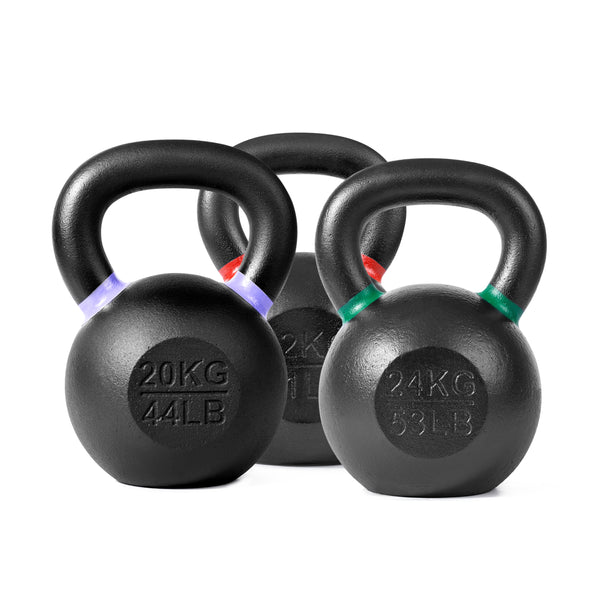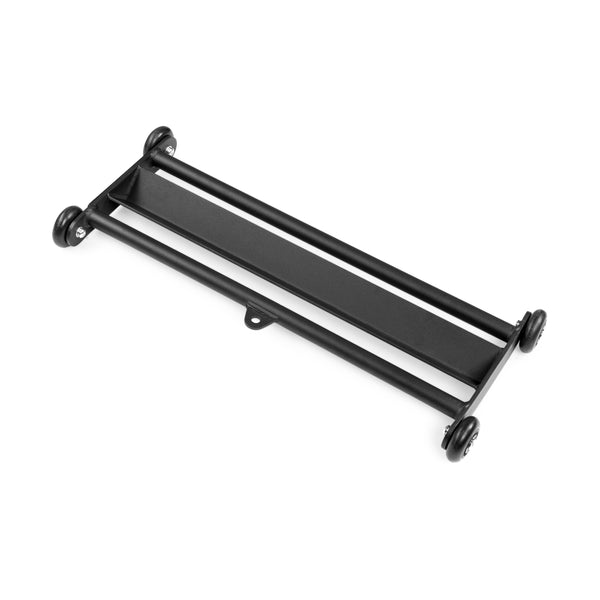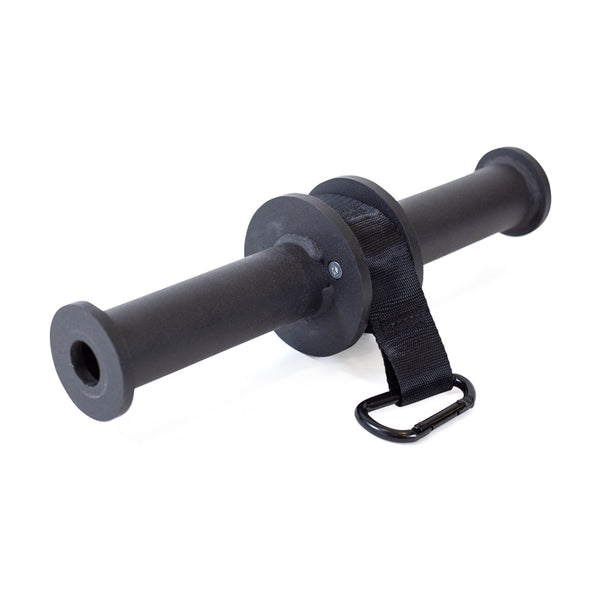Whether you're lifting in the gym or crushing it in your home setup, structuring a strength and conditioning (S&C) session is essential to getting the most out of your workout. S&C training isn't just about lifting heavy weights or pushing your limits—it’s about making your workouts smart, efficient, and functional.
When you structure a session correctly, you're not only going to see better results, but you’ll also reduce the risk of injury and make your time in the gym more enjoyable. Let’s break down how to build an optimal strength and conditioning session that’s tailor-made for success.
What is Strength and Conditioning?
Strength and conditioning is a broad term for exercises that improve your physical fitness and performance. It typically includes a mix of strength training, cardiovascular conditioning, and mobility work.
Think of it as a full-body workout that doesn’t just focus on getting you stronger, but also faster, more agile, and more resilient to injuries. It’s the magic formula behind top athletes, but it’s also great for anyone who wants to level up their fitness game, whether you’re a gym newbie or an experienced lifter.
The Benefits of Strength and Conditioning
Before we dive into the how-to, let’s talk about the why. Why should you structure your sessions like this? Well, the benefits of S&C are pretty much endless:
- Increased Strength: Build muscle, enhance endurance, and get stronger.
- Improved Performance: Whether it's lifting, running, or playing sports, S&C makes you perform better.
- Injury Prevention: Strengthening muscles, ligaments, and joints reduces your risk of injury.
- Better Mobility: Keep your joints and muscles flexible so you can move better and feel more agile.
- Functional Fitness: You'll be prepared for everything life throws at you—lifting heavy things, sprinting to catch the bus, or even just feeling like a champ while carrying groceries.
- Long-Term Health: Strength training improves bone health, metabolic function, and mental well-being.
Should You Do Strength or Conditioning First?
When it comes to structuring your workout, the question of whether to do strength or conditioning first depends largely on your goals. If your primary goal is to build strength, you should always prioritize strength training.
Starting with heavy lifting when you're fresh allows you to lift with maximum intensity, which is essential for building muscle and increasing strength. On the other hand, if your main goal is improving cardiovascular endurance or conditioning, you might want to start with your conditioning exercises. This way, you can give your best effort during high-intensity intervals without the fatigue from lifting heavy weights beforehand.
In general, the rule of thumb is: strength before conditioning if you're after maximal strength gains, and conditioning before strength if your priority is improving endurance or stamina.
Many athletes mix the two to ensure a well-rounded program, but understanding your personal goals will help determine the optimal order for your sessions. Remember, the key to any successful workout is consistency and progressive overload, so make sure to tailor your workout structure based on what you want to achieve.
How to Structure a Strength and Conditioning Workout
Now, let’s talk about the what and the how—the nuts and bolts of structuring an S&C session. Whether you’re training at home with your power rack and trusty kettlebell or at a commercial gym, the basics of structure remain the same.
1. Warm-Up (5-10 minutes)
No one ever got stronger by skipping the warm-up—unless you're a robot, and even then, a little oil never hurt anyone. A good warm-up increases your heart rate, gets your muscles primed, and helps prevent injury.
What to do:
- Foam rolling or light dynamic stretching (think leg swings, arm circles).
- Mobility drills like hip openers or thoracic rotations.
- Low-intensity cardio (rowing, cycling, or jogging).
2. Strength Training (20-30 minutes)
This is the meat and potatoes of your session. The goal is to target your big compound lifts that recruit the most muscles. These include squats, deadlifts, overhead presses, and bench presses. Start with your heaviest or most complex movement first while you're fresh, then move on to accessory lifts.
What to do:
- Choose compound movements (squats, deadlifts, overhead press, bench press) for the first part of your workout.
- Focus on strength-building sets (3–5 sets of 4–6 reps).
- Rest between sets for 2–3 minutes to maximize strength output.
Note: Depending on your program and goals, your strength training could be an hour or more. Those rest sets between heavy deadlifts matter, yo.
3. Conditioning (10-20 minutes)
This is the part where you get to sweat it out. Conditioning training is about improving your cardiovascular fitness, stamina, and endurance. You don’t need endless hours on the treadmill—think interval training or circuit-style workouts.
What to do:
- HIIT (High-Intensity Interval Training) or Tabata for conditioning.
- Sled pushes, kettlebell swings, or burpees for a killer full-body burn.
- Include functional movements like jump rope, box jumps, or battle ropes.
4. Accessory Work (10-15 minutes)
This is where you focus on smaller muscle groups or areas that need extra attention. If you're working on your biceps, shoulders, or core, now’s the time to target them. This is your chance to add in things like cable curls, planks, or dumbbell rows.
What to do:
- Add in isolation exercises (like cable triceps pushdowns or bicep curls).
- Focus on core work (leg raises, Russian twists).
- Target any weak areas (shoulder stability, glute activation).
5. Cool Down (5-10 minutes)
Don’t just end your session and run out the door. Cooling down helps lower your heart rate and aids in muscle recovery. It’s a great time to work on flexibility and mobility.
What to do:
- Light cardio to gradually bring your heart rate down.
- Stretching or foam rolling to reduce muscle tightness and improve flexibility.
- Work on breathing exercises to enhance recovery and relaxation.
Tips for Success in Strength and Conditioning Workouts
- Start with Clear Goals: Are you training for strength? Power? Endurance? Define your goal so you can structure your workout accordingly.
- Don’t Skip Your Warm-Up: It’s not just about loosening up—it helps prevent injury and improves your performance.
- Progressive Overload is Key: Gradually increase the intensity, weight, or reps to keep making progress.
- Rest Between Sets: This might feel like a “cheat,” but rest is when your muscles actually grow.
- Keep It Balanced: Train all muscle groups to avoid muscle imbalances that could lead to injuries.
FAQs
Q: How often should I do strength and conditioning?
A: Start with 3–4 sessions per week. This allows for adequate recovery while also hitting your strength and conditioning goals.
Q: Do I need a lot of equipment to do S&C at home?
A: Not at all! With a power rack, dumbbells, kettlebells, and a strong cable machine (like the Bells of Steel Kraken or Space-Saving Cable Tower), you’ve got everything you need for a killer workout at home.
Q: How long should a strength and conditioning session last?
A: Most sessions should be around 45 minutes to an hour—enough time to get through your warm-up, strength training, conditioning, and cool down without dragging.
Final Thoughts
A well-structured strength and conditioning session is like a workout blueprint. It’s not just about pushing yourself harder but doing so in a way that builds a strong, balanced, and capable body.
From your warm-up to your cool-down, every part of your workout has a purpose, and when you put it all together, you’ll see bigger gains, feel better, and avoid those pesky injuries.
Now, grab your dumbbells, rack up your weights, and get ready to crush your S&C session—your future strong self will thank you.




